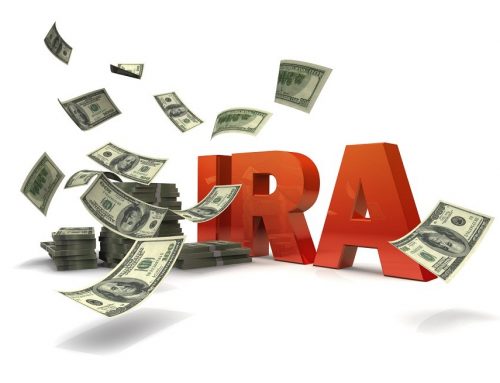Of all the retirement plans available to small business owners, the SIMPLE IRA plan (Savings Incentive Match PLan for Employees) is the easiest to set up and the least expensive to manage. The catch is that you’ll need to set it up by October 1st. Here’s what you need to know.
What is a SIMPLE IRA Plan?
SIMPLE IRA Plans are intended to encourage small business employers to offer retirement coverage to their employees. Self-employed business owners are able to contribute both as employee and employer, with both contributions made from self-employment earnings. In addition, if living expenses are covered by your day job (or your spouse’s job), you would be free to put all of your sideline earnings, up to the ceiling, into SIMPLE IRA plan retirement investments.
How does a SIMPLE IRA Plan Work?
A SIMPLE IRA plan is easier to set up and operate than most other plans in that contributions go into an IRA you set up. Requirements for reporting to the IRS and other agencies are minimal as well. Your plan’s custodian, typically an investment institution, has the reporting duties and the process for figuring the deductible contribution is a bit easier than with other plans.
SIMPLE IRA plans calculate contributions in two steps:
1. Employee out-of-salary contribution
The limit on this “elective deferral” is $13,000 in 2019, after which it can rise further with the cost of living. Owner-employees age 50 or older can make an additional $3,000 deductible “catch-up” contribution (for a total of $16,000) as an employee in 2019.2. Employer “matching” contribution
The employer match equals a maximum of three percent of employee’s earnings.
An owner-employee age 50 or over in 2019 with self-employment earnings of $40,000 could contribute and deduct $13,000 as employee plus an additional $3,000 employee catch up contribution, plus a $1,200 (three percent of $40,000) employer match, for a total of $17,200.
Are there any Downsides to SIMPLE IRA Plans?
Because investments are through an IRA you must work through a financial institution acting, which acts as the trustee or custodian. As such, you are not in direct control and will generally have fewer investment options than if you were your own trustee, as is the case with a 401(k).
You also cannot set up the SIMPLE IRA plan after the calendar year ends and still be able to take advantage of the tax benefits on that year’s tax return, as is allowed with Simplified Employee Pension Plans, or SEPs. Generally, to make a SIMPLE IRA plan effective for a year, it must be set up by October 1 of that year. A later date is allowed only when the business is started after October 1 and the SIMPLE IRA plan must be set up as soon as it is administratively feasible.
Furthermore, once self-employment earnings become significant however, other retirement plans may be more advantageous than a SIMPLE IRA retirement plan.
If you are under 50 with $50,000 of self-employment earnings in 2019, you could contribute $13,000 as employee to your SIMPLE IRA plan plus an additional three percent of $50,000 as an employer contribution, for a total of $14,500. In contrast, a Solo 401(k) plan would allow a $31,500 contribution.
With $100,000 of earnings, the total for a SIMPLE IRA Plan would be $16,000 and $44,000 for a 401(k).
If the SIMPLE IRA plan is set up for a sideline business and you’re already vested in a 401(k) in another business or as an employee the total amount you can put into the SIMPLE IRA plan and the 401(k) combined (in 2019) can’t be more than $19,000 or $25,000 if catch-up contributions are made to the 401(k) by someone age 50 or over. So, someone under age 50 who puts $9,500 in her 401(k) can’t put more than $9,500 in her SIMPLE IRA plan for 2019. The same limit applies if you have a SIMPLE IRA plan while also contributing as an employee to a 403(b) annuity (typically for government employees and teachers in public and private schools).
How to Get Started Setting up a SIMPLE IRA Plan
You can set up a SIMPLE IRA plan account on your own; however, most people turn to financial institutions. SIMPLE IRA Plans are offered by the same financial institutions that offer any other IRAs and 401(k) plans.
You can expect the institution to give you a plan document and an adoption agreement. In the adoption agreement, you will choose an “effective date,” which is the start date for payments out of salary or business earnings. Again, that date can’t be later than October 1 of the year you adopt the plan, except for a business formed after October 1.
Another key document is the Salary Reduction Agreement, which briefly describes how money goes into your SIMPLE IRA plan. You need such an agreement even if you pay yourself business profits rather than salary. Printed guidance on operating the SIMPLE IRA plan may also be provided. You will also be establishing a SIMPLE IRA plan account for yourself as participant.
Ready to Explore Retirement Plan Options for your Small Business?
SIMPLE IRA Plans are an excellent choice for home-based businesses and ideal for full-time employees or homemakers who make a modest income from a sideline business and work well for small business owners who don’t want to spend a lot of time and pay high administration fees associated with more complex retirement plans.
If you are a business owner interested in discussing retirement plan options for your small business, don’t hesitate to contact the office today.

